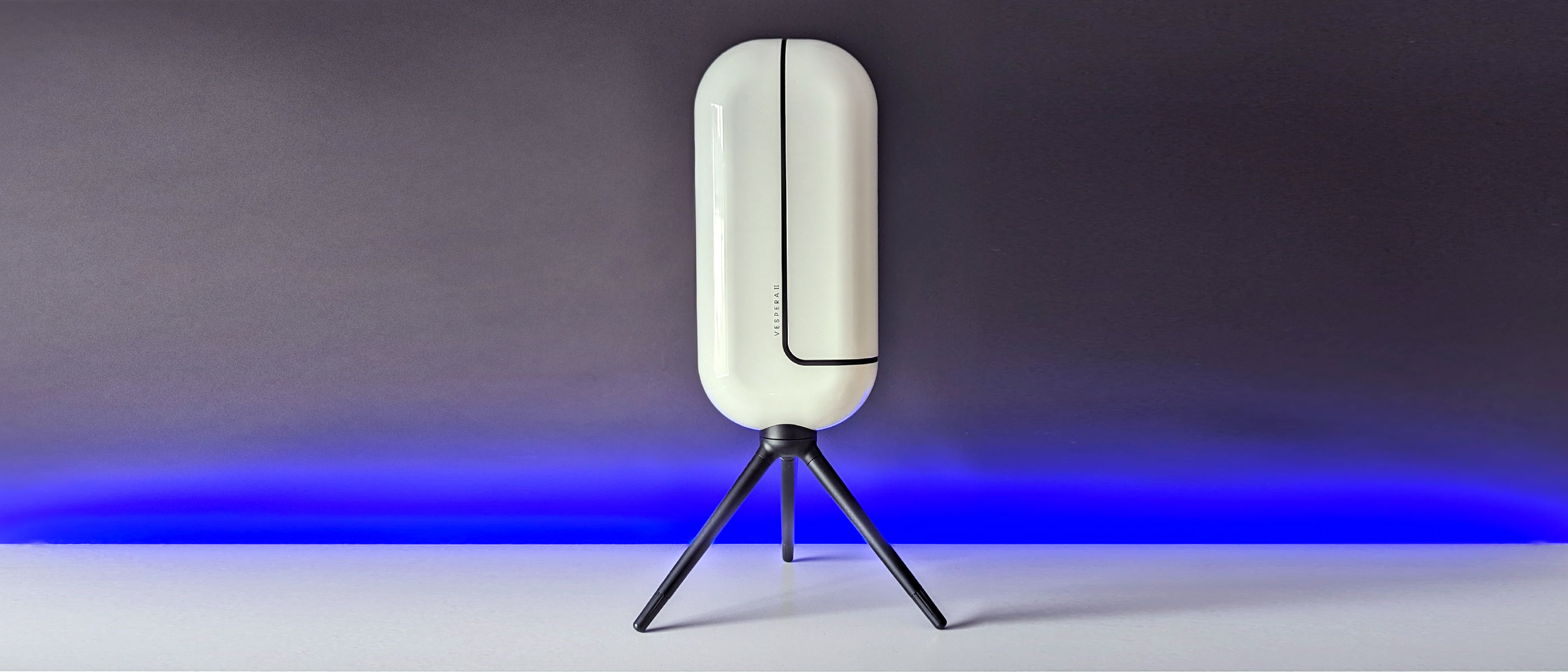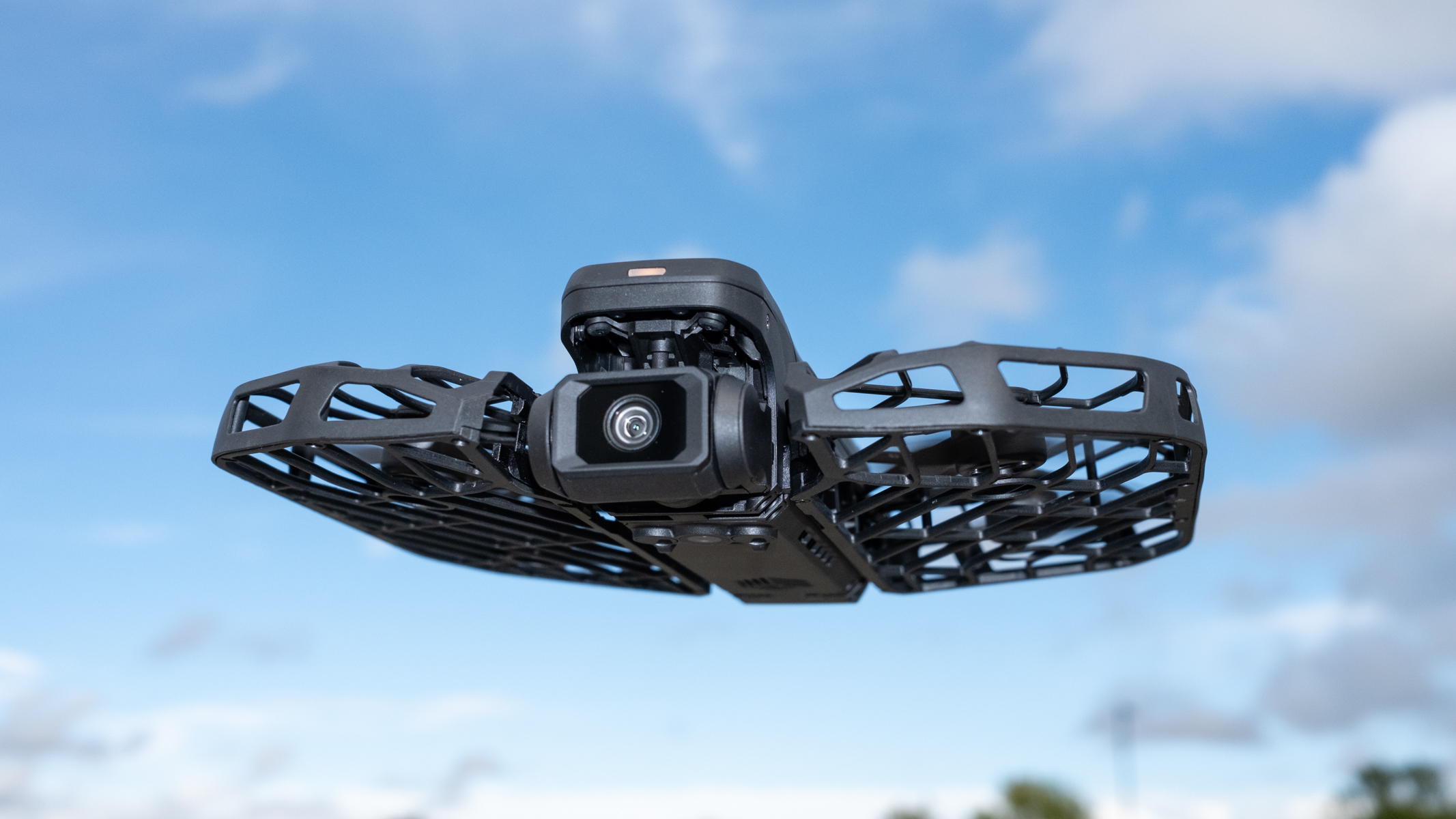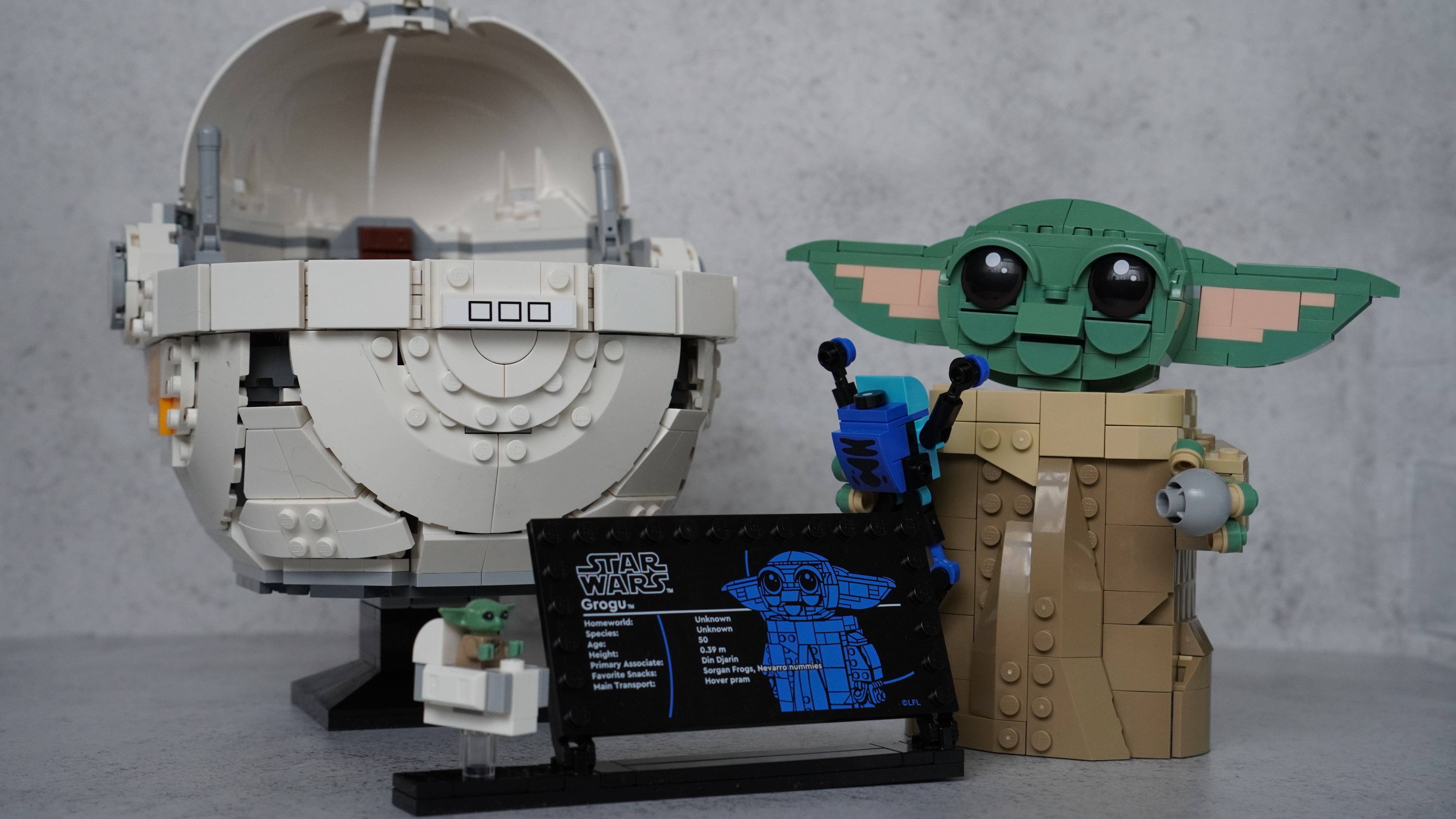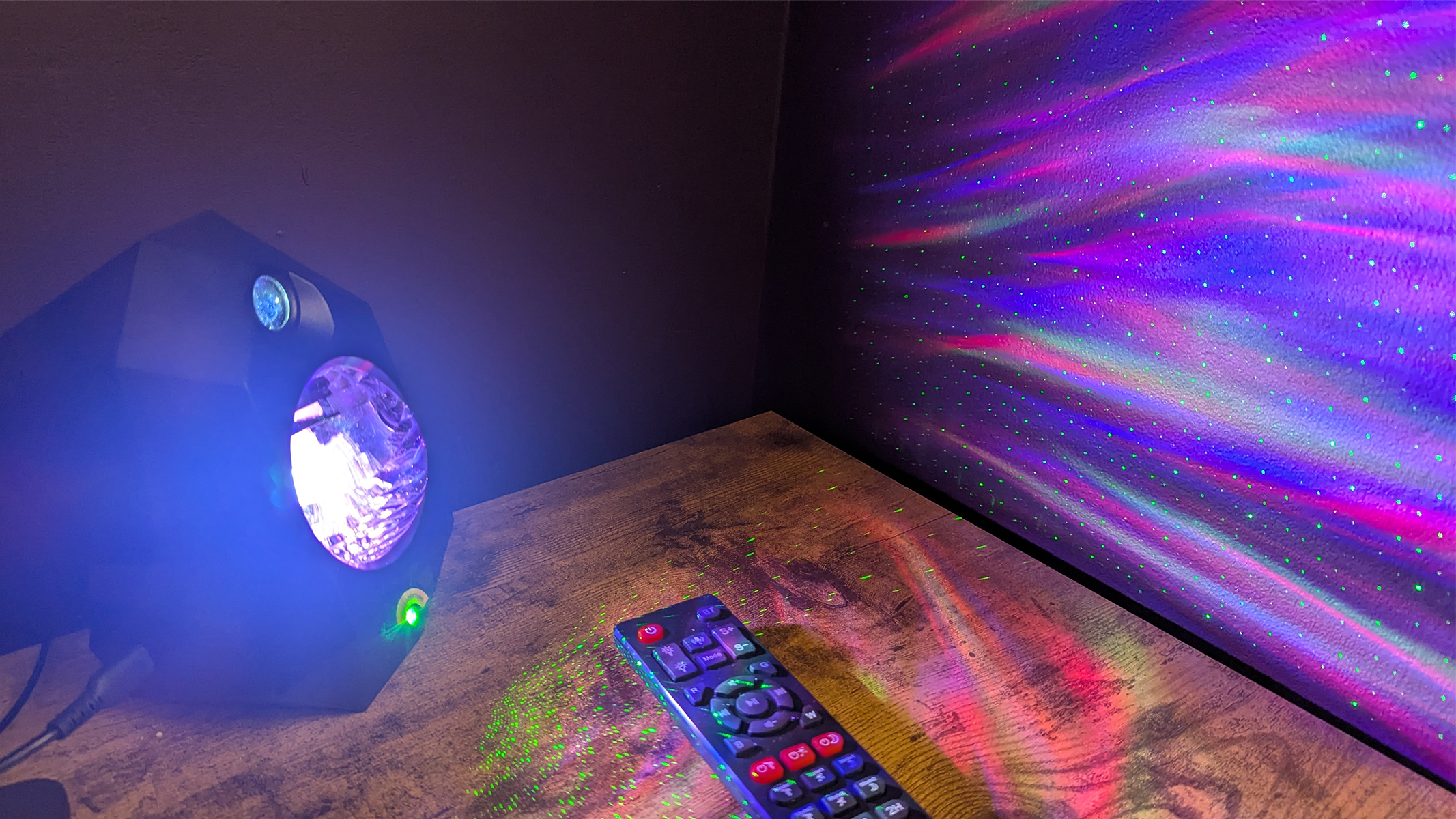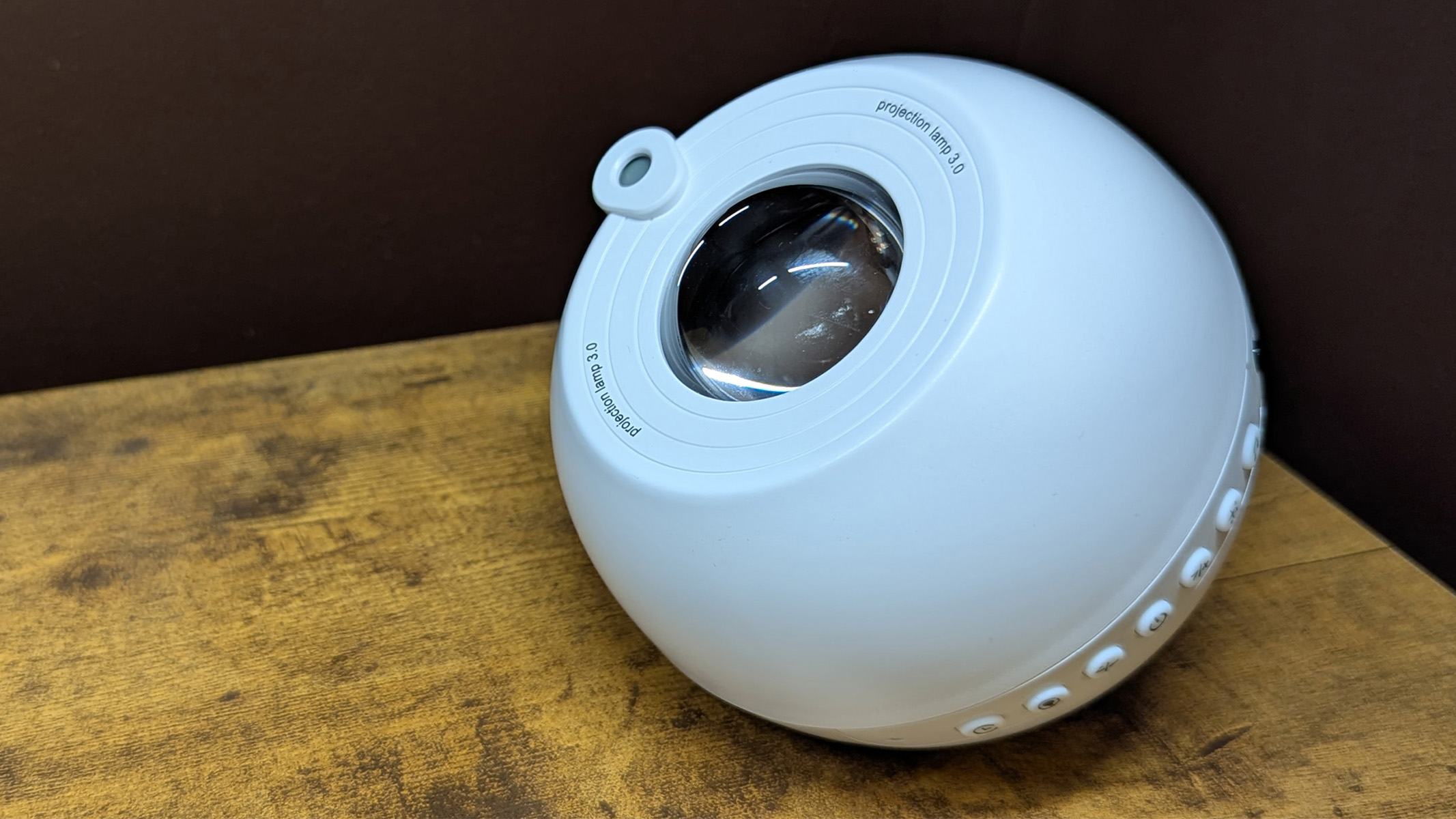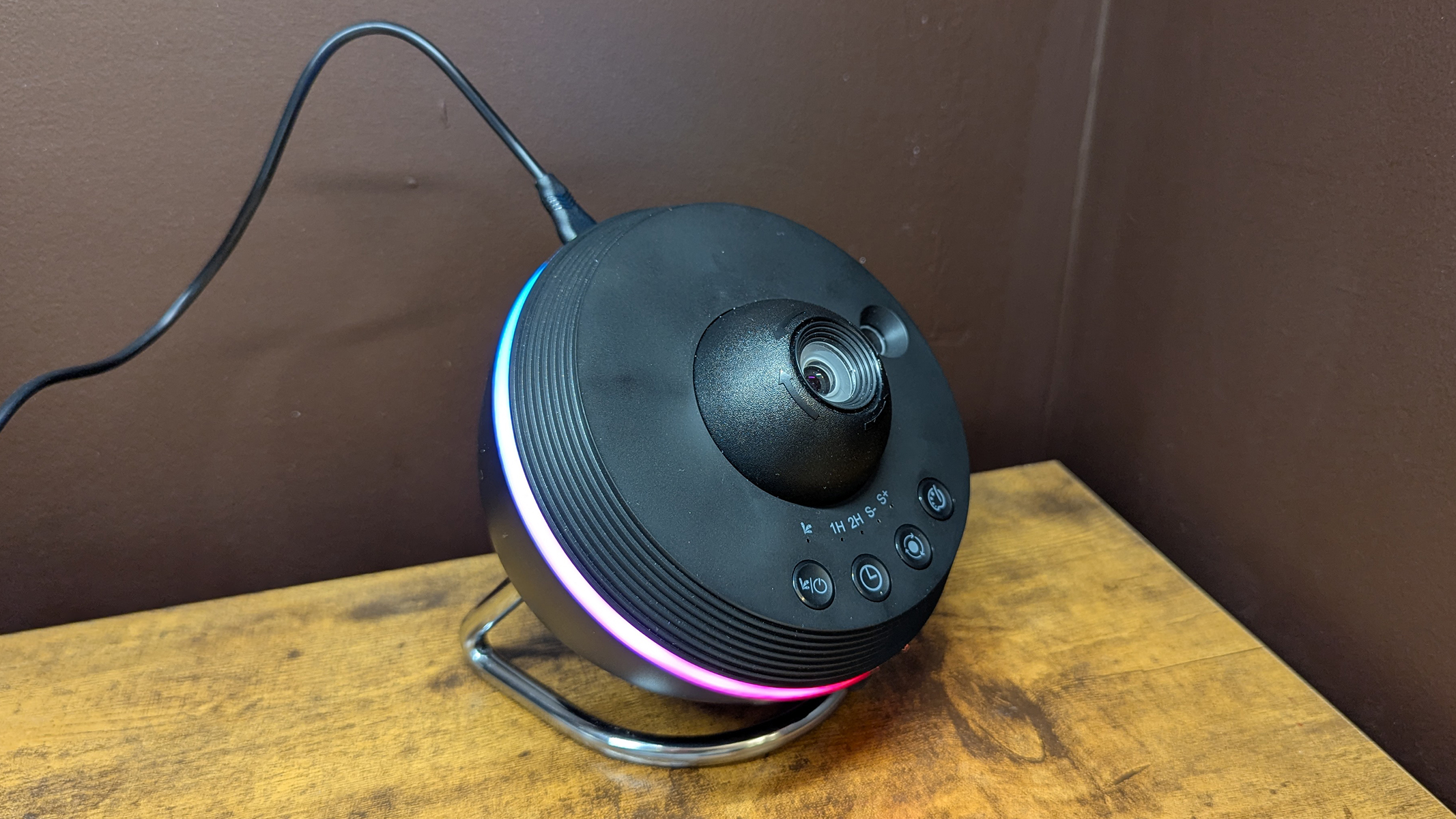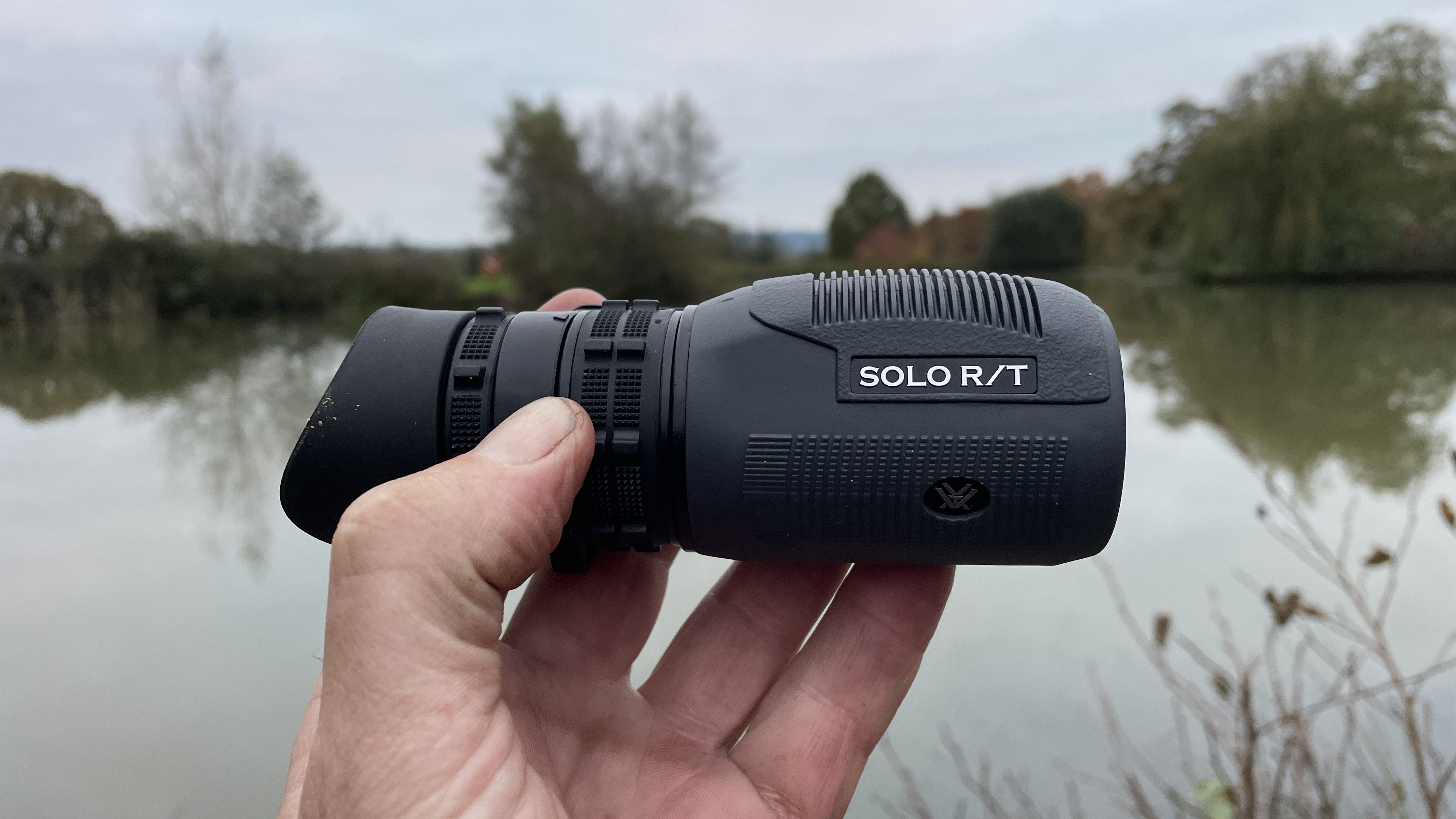Space Verdict
One of the best smart telescopes you can buy, despite it being one of the cheapest in its class. This is the telescope to go for if you want incredible views of the night sky at an entry-level price.
Pros
- +
Excellent, detailed astrophotographs
- +
Cuts through light pollution with ease
- +
Automatically slews and focuses
- +
Great value for money
Cons
- -
No real usable planetary imaging
- -
Singularity app requires finessing
- -
Standard tripod a little too short
Why you can trust Space.com
Image resolution: 8.3 MP
Focal ratio: F/5
Size: 40 x 20 x 9 cm (closed)
Field of view: 2.5 x 1.4-degrees (native)
Mount: Motorized alt-az
Battery: 4 hours (built-in)
Connectivity: Wi-Fi
Weight: 11 lbs (5 kg)
Vaonis' latest fully-fledged smart telescope, the Vaonis Vespera II, leads on from its predecessor the Vaonis Vespera which we reviewed in September 2023. It does everything the original model did but better, and it does this all while shaving over $800 / £530 off the original's MSRP.
You'd be forgiven for conflating the two models, they are identical to look at from the outside. However, it's slightly lighter and the attention to detail inside the telescope has ramped up significantly. Instead of a 2 Megapixel sensor the Vespera II packs 8.3 Megapixels (MP) and can ramp up to 24MP when shooting in Live Mosaic Mode, an option that essentially takes a patchwork panorama of your chosen area of night sky.
Overall, we think this is one of the best smart telescopes you can buy right now, and it's one of the cheapest (though still a significant investment for many astronomers). While it's not the first choice telescope for seeing planets, it certainly is one of the best telescopes you can buy if you want automation and astrophotographs in a matter of minutes from your own backyard.
Vanois Vespera II: Design
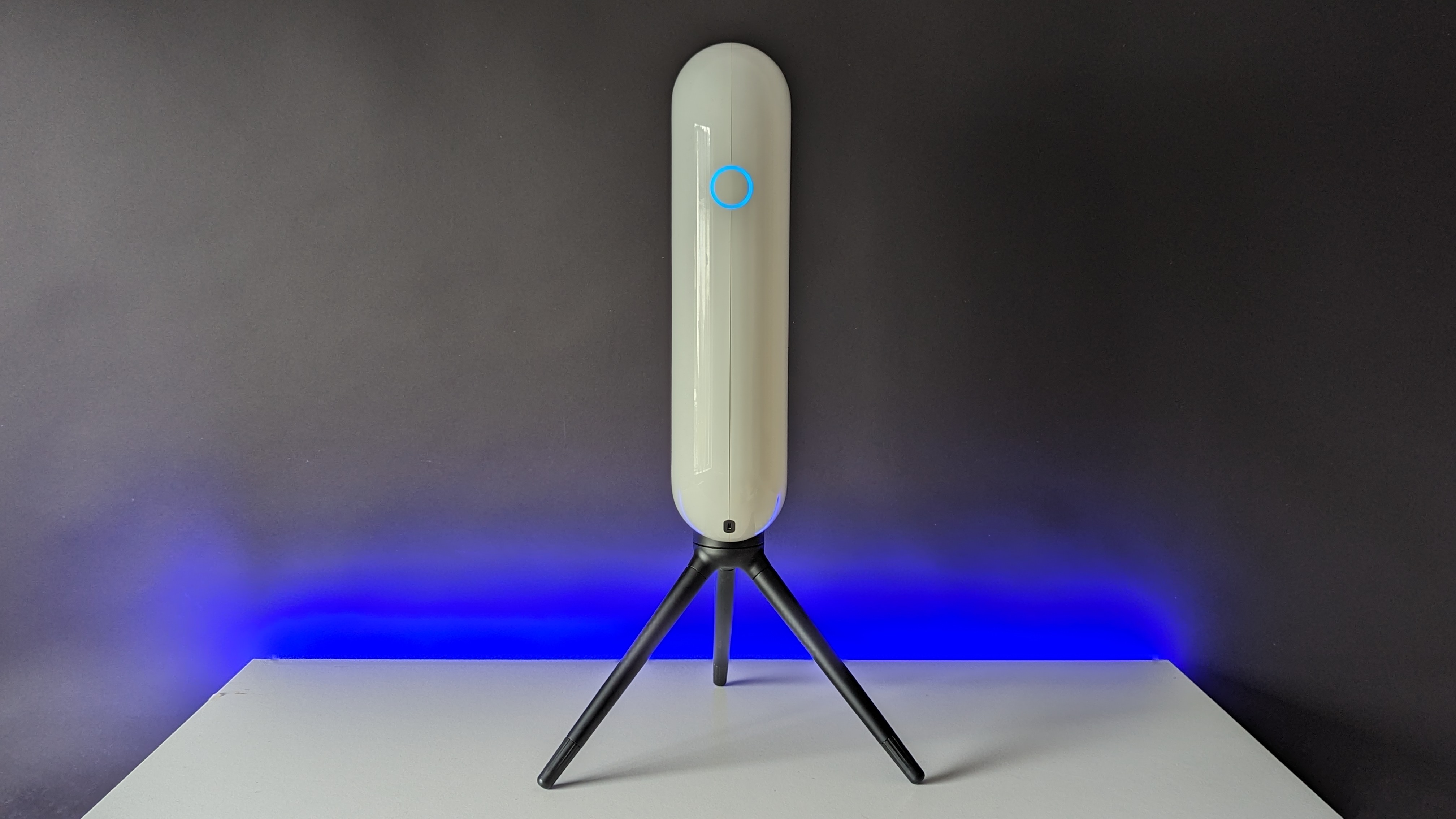

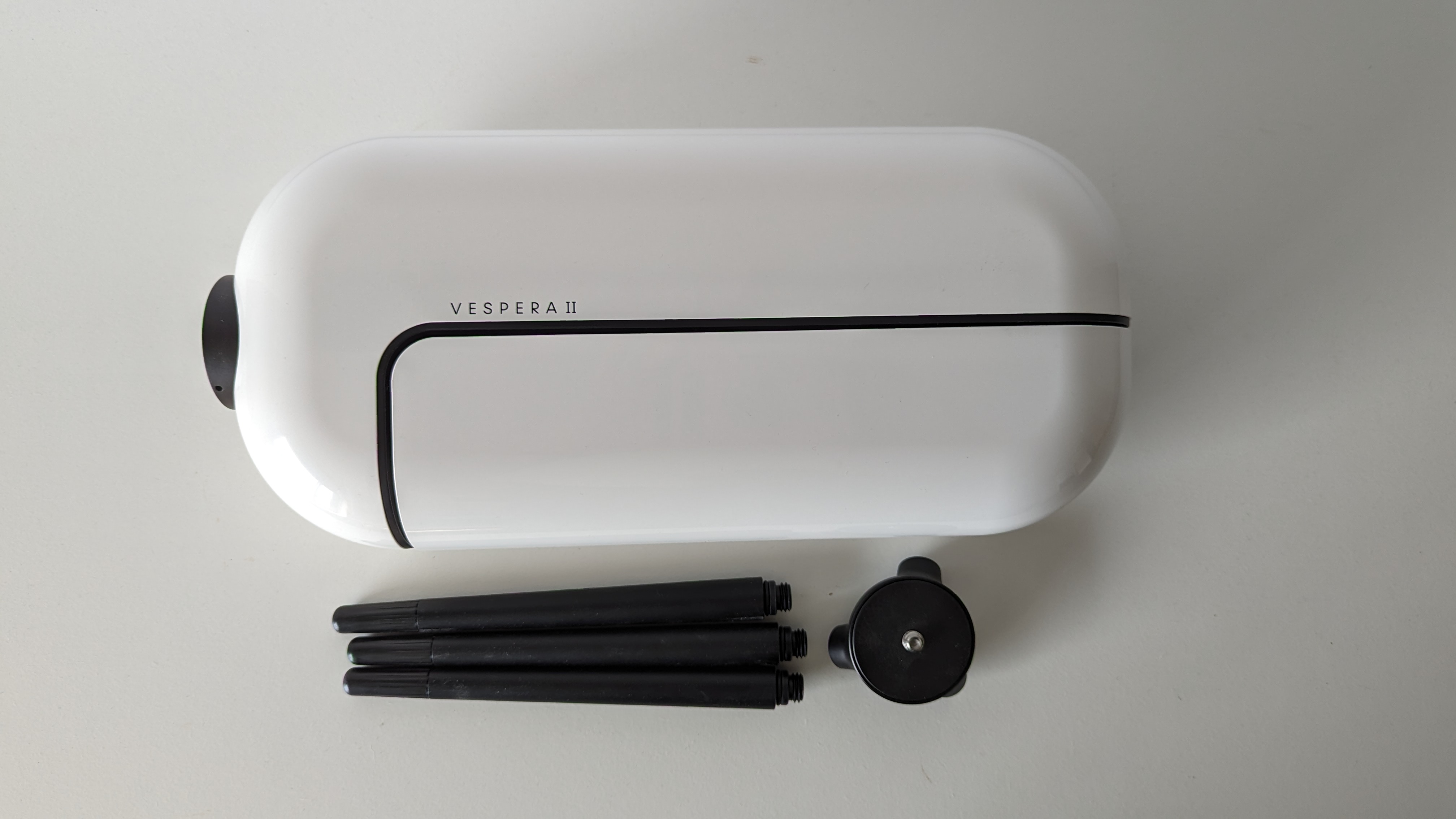
- ★★★★★
- Up and ready within five minutes
- Anyone with access to smartphone can operate
- Small enough to take on any journey
It's hard to find a way to simplify the design of the Vaonis Vespera II, much is the way with many smart telescope designs across all the leading brands. Taking almost all its cues from the original Vespera the optical tube assembly (OTA), motor and all electronics are encased in a white, shiny plastic exterior that breaks apart to allow the OTA to slew into position to the desired target. A single 1/4-inch tripod attachment on the base slots into the fixed-height tripod that it ships with as standard, though we would recommend investing in the superior Vespera adjustable tripod to gain some height.
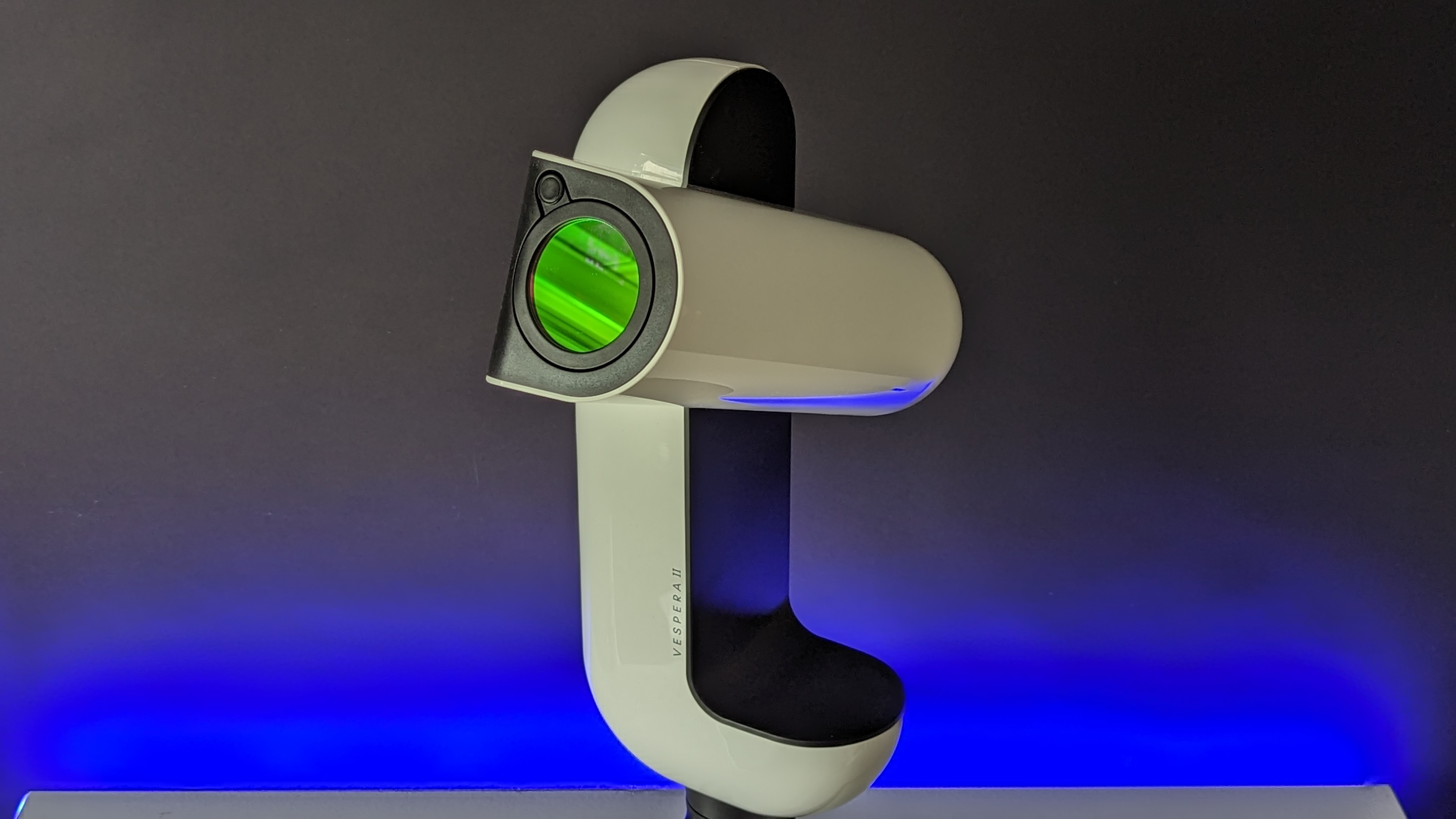
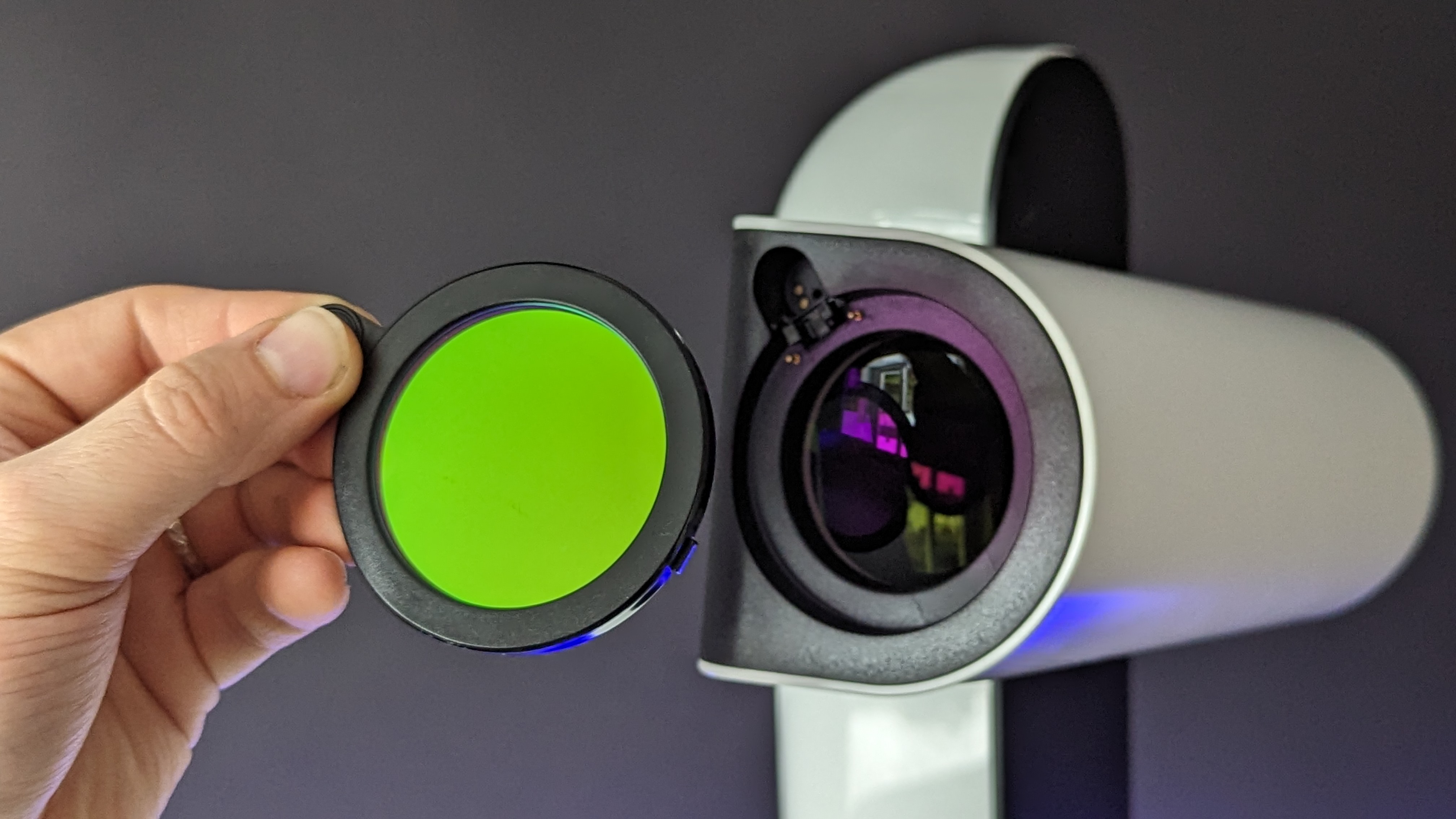

Operation through the Singularity app (Vaonis' proprietary app compatible with Android and iOS devices) is easy. It took us about three to four minutes to connect via Wi-Fi and synchronize with the telescope. The user interface is packed with information but doesn't feel cluttered. We found it easy to navigate the weather, news and telescope controls because they are compartmentalized into thirds on the app opening screen.
One power button on the telescope and a USB-C port for charging gave us about 11 hours of constant use throughout the night and, depending on the weather and length of use, should see you through a weekend trip to a dark sky location without the need to recharge with a power bank.
Much like changing filters on a camera the Vespera II has an in-built filter, devoid of filtration, but can be swapped with a quick press of the button for their proprietary solar filter, allowing for daytime solar observations.
While we absolutely loved the quick setup of the telescope, we did occasionally catch the power button during assembly, turning it on by accident.
Vaonis Vespera II: Performance

- ★★★★★
- Observations from light-polluted cities were impressively clear
- Highly detailed, contrasted galaxies
- Imaging planets was difficult and underwhelming
After three to four minutes of setup through our Google Pixel 6 Pro Android phone, were were ready to control the smart telescope through the Singularity app. We had the light pollution filter that shipped with the telescope attached and set up in the backyard. Considering this is a town with a Bortle class rating of five we were immensely satisfied with the color rendition of the images.
Slewing straight to our favorite M42 in the Orion constellation views were immediately impressive. The first image produced a photograph most observers would be happy to share with friends and social media but longer observations improved things further. When in enhancement mode the Vespera II takes successive images, stacking and processing them on the go. The result is an image with improved noise reduction as it adds detail and overall clarity of the target and surrounding stars.
In our personal experience with the telescope, we found that observations of one target from a light-polluted city improved up to around 15-20 minutes, but negligible differences after that. However, heading to somewhere with exceptionally dark skies then we see these longer observations improving dramatically.
For example, imaging M42 for 5 minutes 20 seconds gave us a combination of 32 stacked images with clear detail in the nebula and realistic colors with no bias toward one white balance or another. Exposing longer over 20 minutes 10 seconds left us with 121 stacked images where image noise and finer details were gained further. Considering this is one of, if not the cheapest smart telescope you can buy right now, we have to take our hat off to Vaonis for the quality of this instrument.
The light pollution filter, coupled with the fact the telescope's front element is recessed into the optical tube assembly means the Vespera II handles light pollution surprisingly well. Even observing just 100 yards away from the nearest street light there was minimal skyglow or flare.
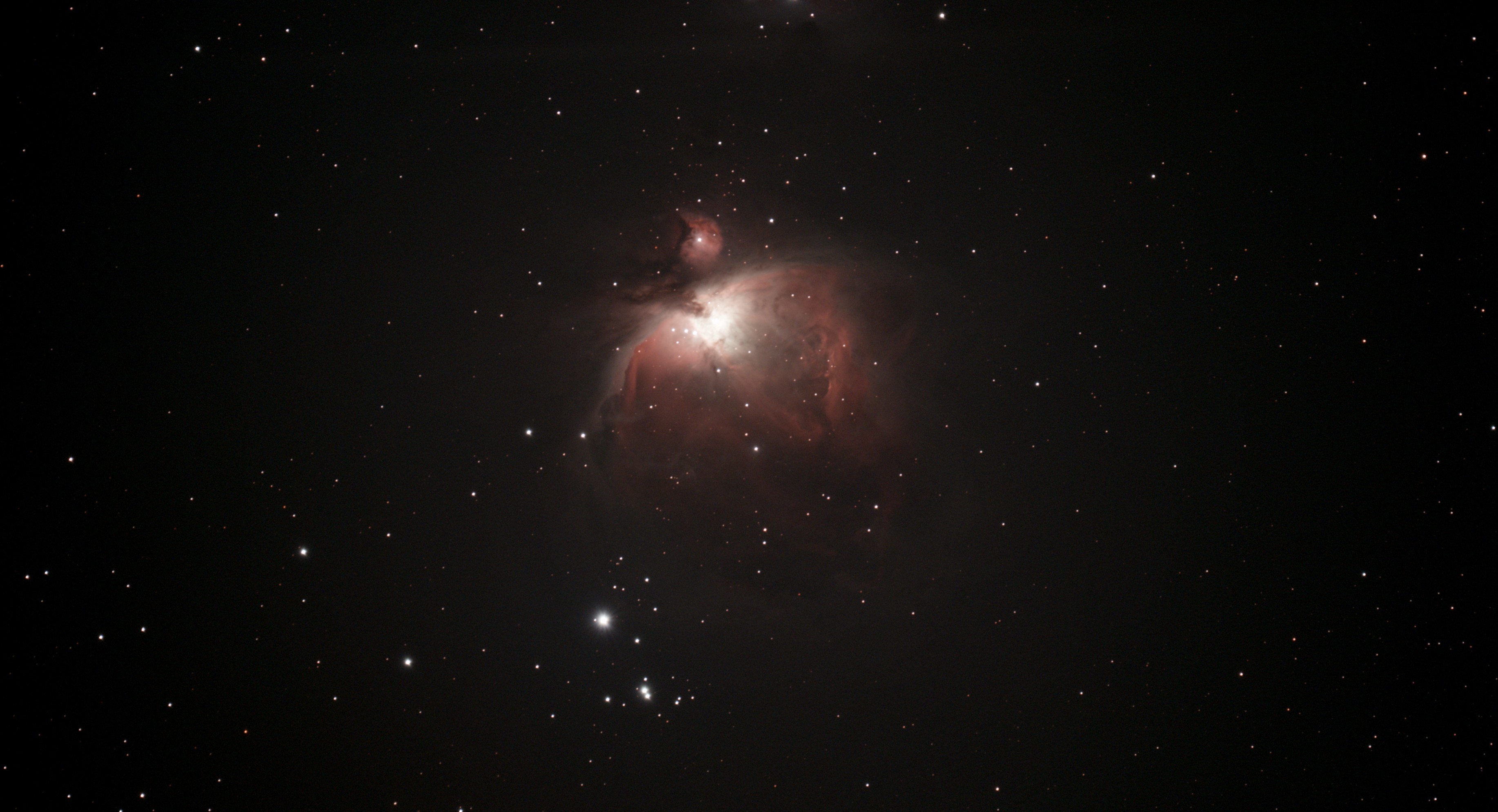

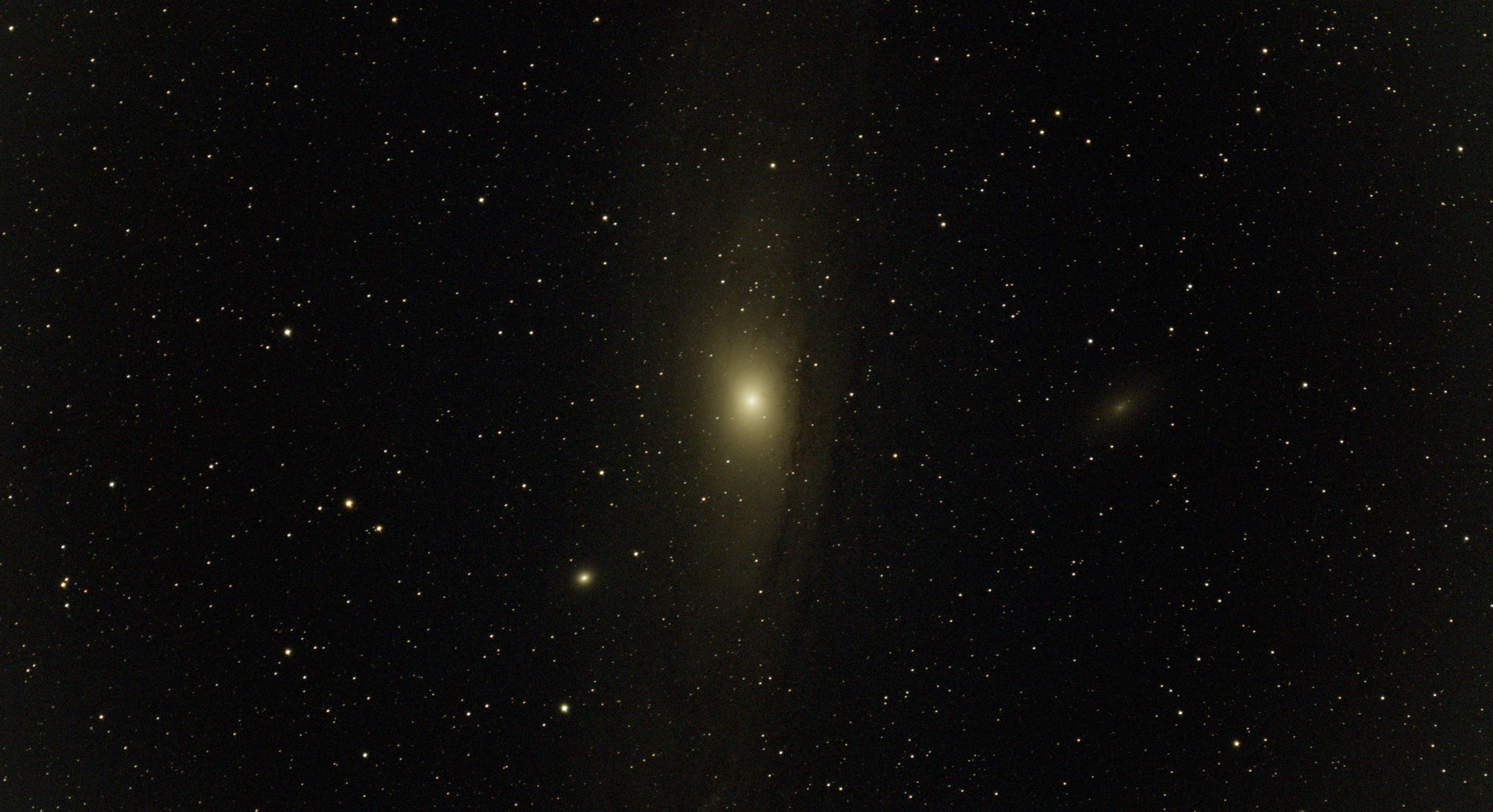
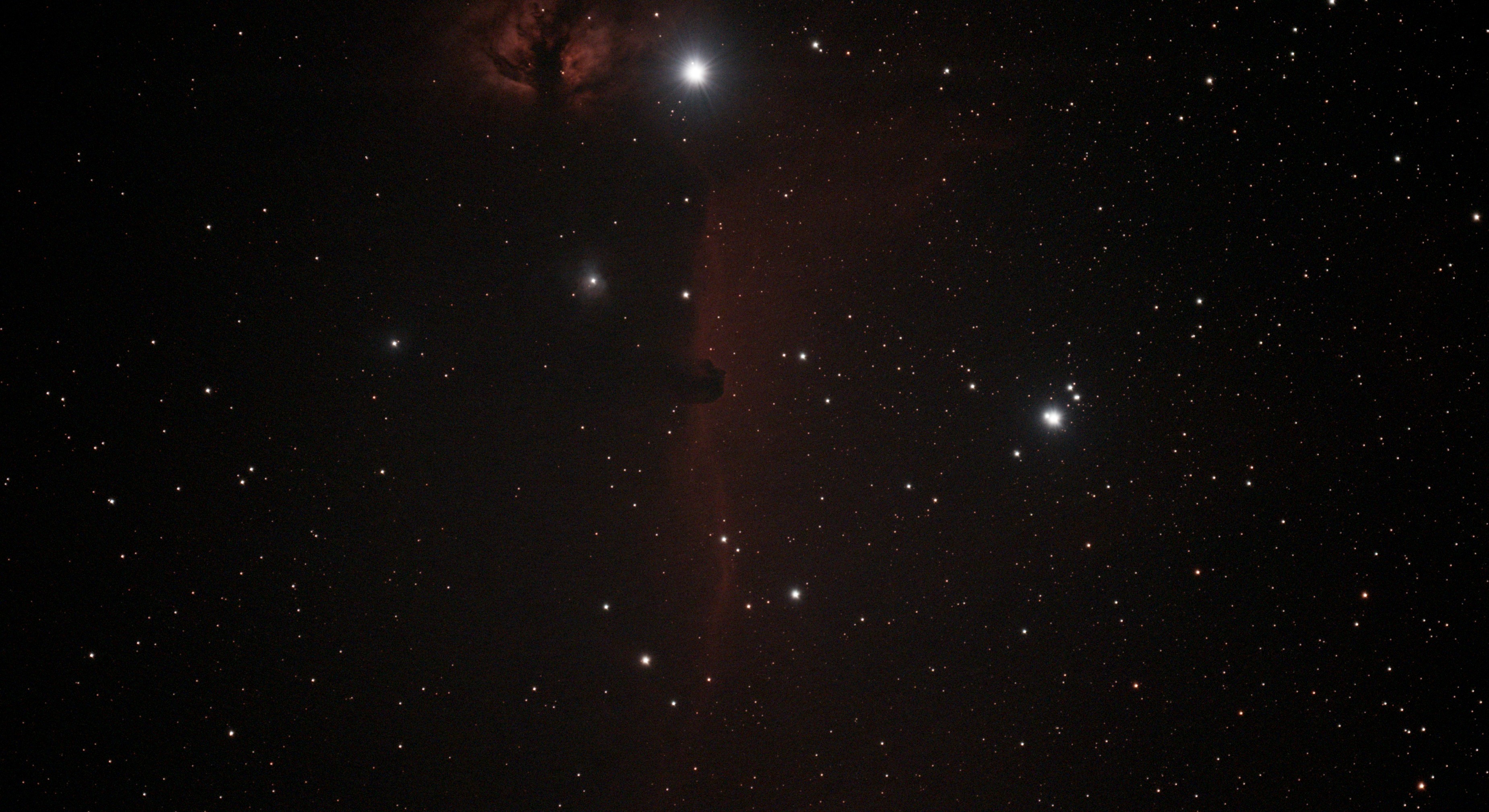
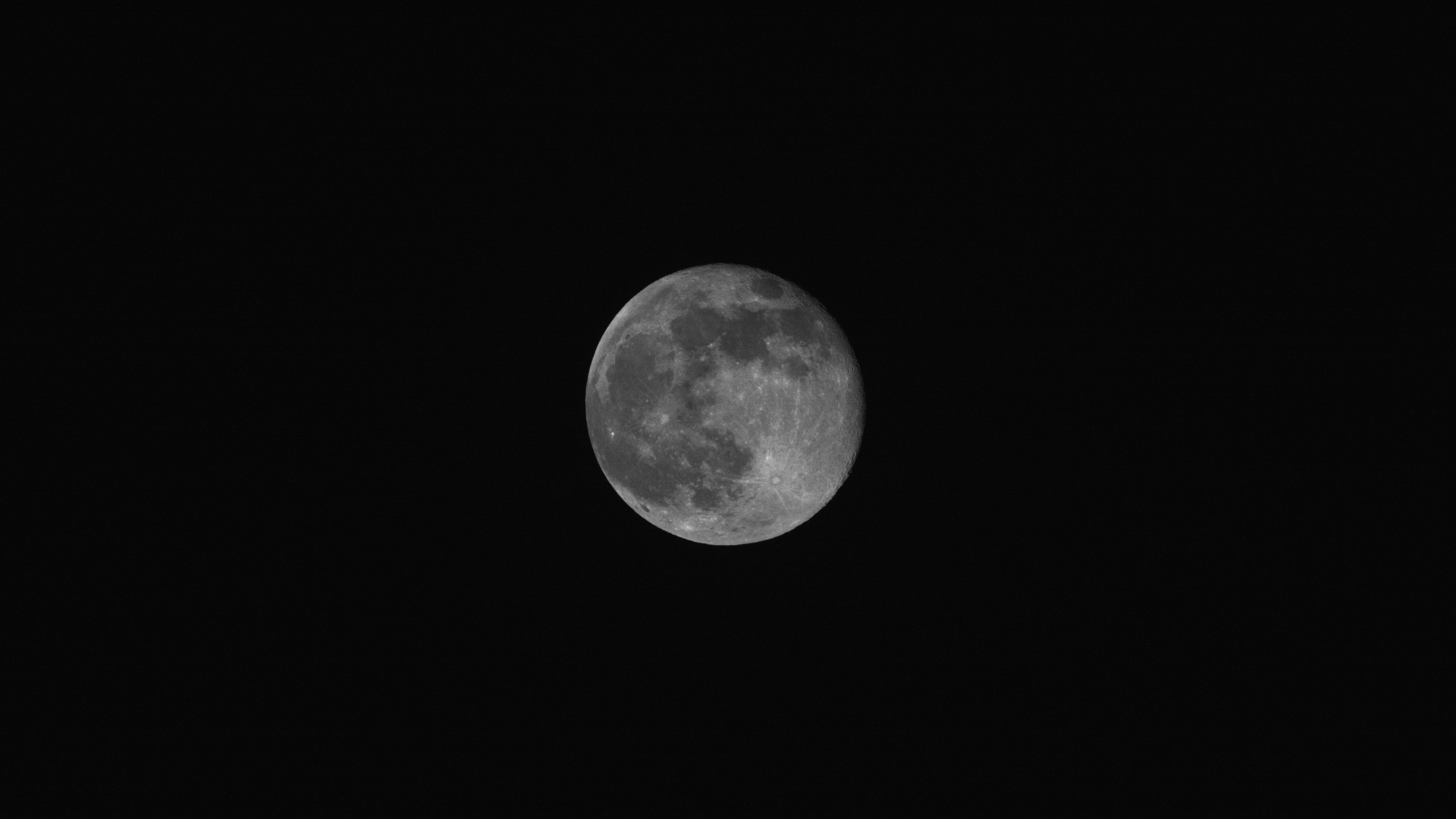

It's not just the popular nebulas like M42 that are clear and detailed due to the Vespera II's excellent light pollution handling, but also our nearest galactic neighbor M31, the Andromeda Galaxy. With just a few minutes of observing (three minutes and 50 seconds, to be precise) the galactic core and dust lanes were visible with good definition. Despite longer exposures, we couldn't capture finer details around it like M32 or M110 (NGC 205) though but we suspect that is more to do with the city sky glow than the performance of the telescope.
The telescope also gave great results on other Messier objects like M51, M78 and M82 and even IC434, the Horsehead nebula despite being quite small in the image we were still able to make out the instant shapes and colors even if Alnitak gave some unwanted glare.
Even observing the moon we garnered some good views. As the moon entered waxing gibbous (99.95% full) we had plenty of light to capture photos which you can see above. Autoexposure handled the bright moon well when slewed to, adjusting from the much darker night sky when viewing M31 or M42. However, it didn't blow us away. We would prefer to pick up a pair of the best binoculars or turn to a more powerful traditional telescope like the Celestron NexStar 8SE to get the 'wow' factor when observing the moon, as the moon was just a little too small in the frame to impress us. This restriction of focal length transfers to planets as well, making them nearly impossible to spot if it weren't for the super accurate automatic slewing of the telescope.
Vaonis Vespera II: Functionality


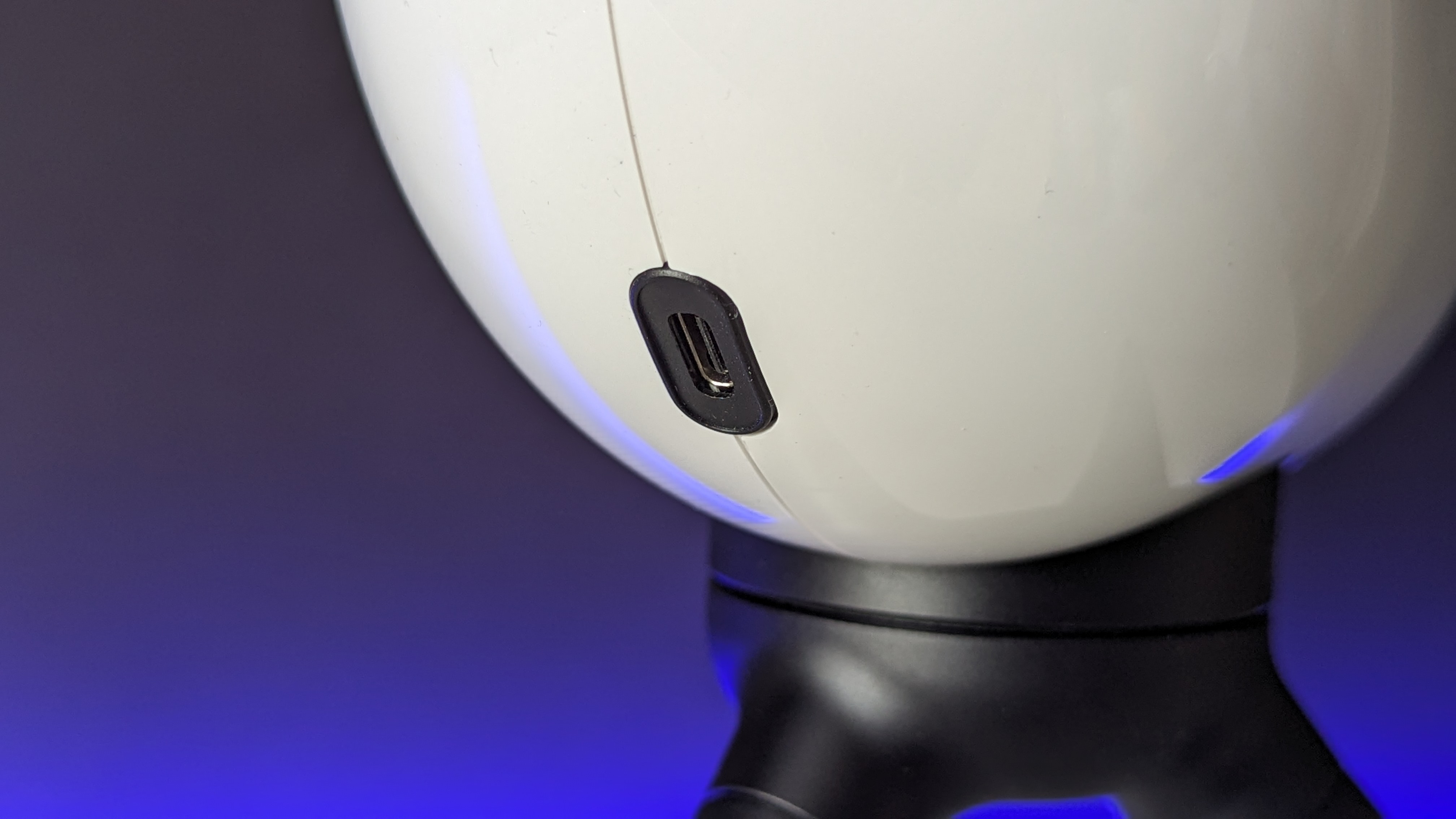
- ★★★★★
- Automatic functions are solid and consistent
- Singularity app could provide more information when there's an error
- Required Wi-Fi synchronization restricts smartphone use for stargazing parties
This is a five-star smart telescope review for a five-star smart telescope. We love the views and astrophotographs it takes for the price. Fully automatic functions like go-to slewing, automatic focusing and automatic exposure (useful for solar observations when used with the compatible solar filter) make this an eminently usable telescope day or night. But that doesn't mean it isn't without limitations or niggles.
The Vespera II emits a Wi-Fi signal to connect with the Singularity app via a smartphone with enough range (in our experience at least five meters) to either move around the backyard or head back indoors for a warm cup of joe when imaging in the wintry nighttime. But this meant that we needed to engage the mobile data on our smartphone in order to continue streaming music or share images via WhatsApp App etc. If you don't have this ability, or if you're in a data dead spot then you'll have to unlink from the telescope to use the internet on your device.
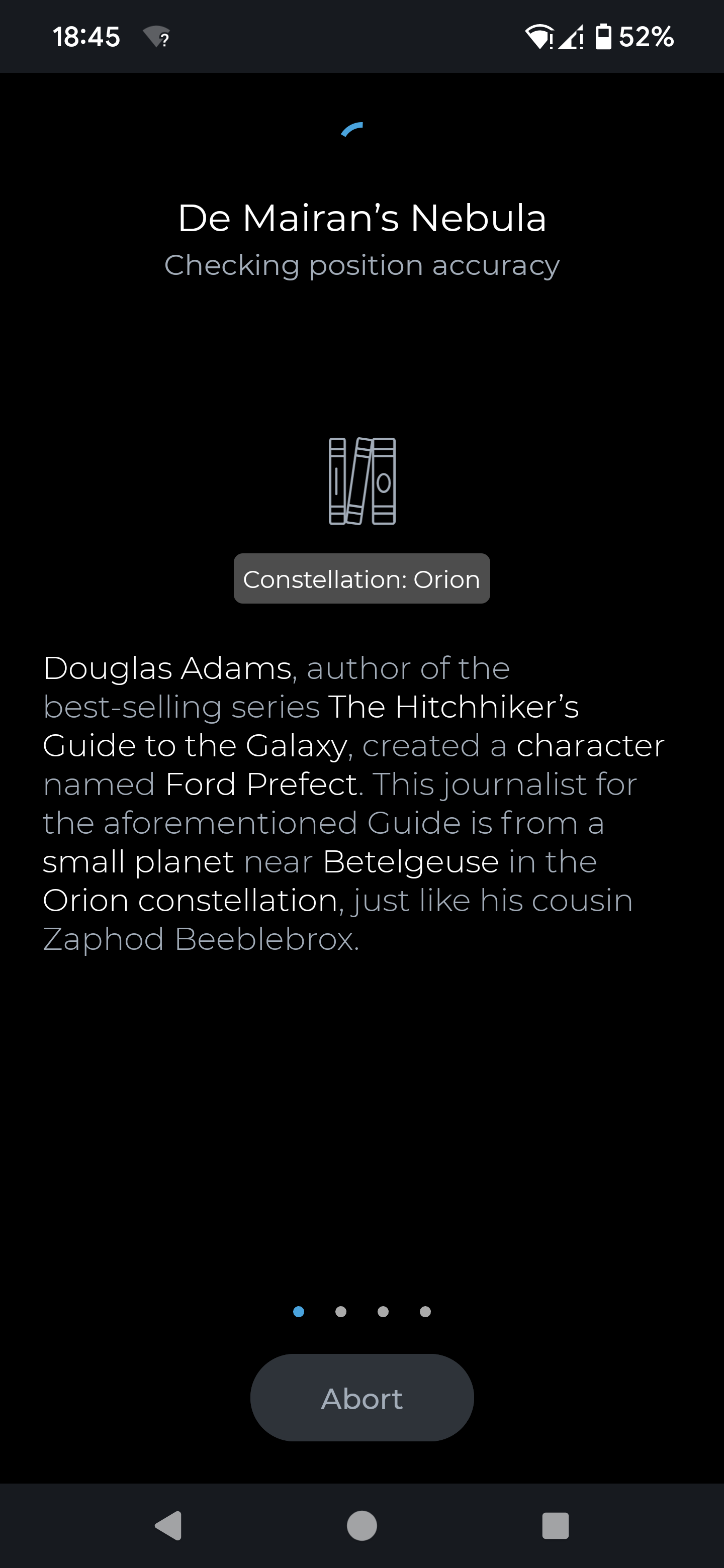
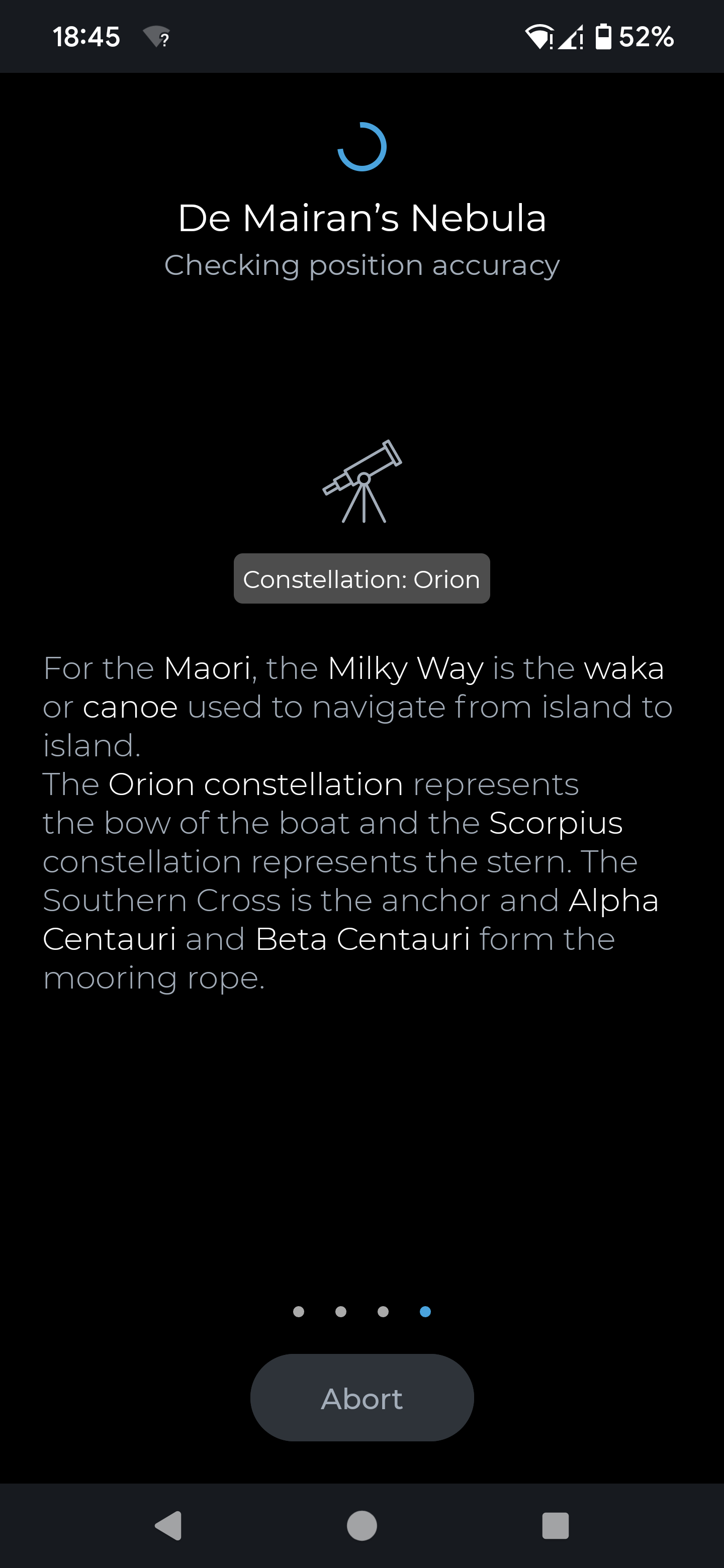

On a more positive note, the app provides interesting statistics and information on targets when selected to pass the time whilst it slews, focuses and exposes the selected object. This can be shared amongst the group if you're having a stargazing party as it takes several minutes when hopping between stars. After a few hops, we would simply set down our smartphone while the telescope was getting itself aligned and focused and luckily Vaonis had thought of this. When the Vespera II is ready to display the object the app lights up with a starry explosion animation which lights up dimly lit environments and grabbed our attention to go and check the app. This is a very nice touch.
The Singularity app could be made better by automatically stopping an observation when selecting another target, rather than requesting the current observation to be manually stopped first. But we like the belt and braces approach to preventing an accidental stopping of a long exposure, but ultimately it was just frustrating.
Also, more feedback when we got a failed observation would have been handy. Or a quicker way for the telescope to detect that there was an obstruction like a fence, building or hill, or cloud cover masking the night sky object. We had several failed observations in a row resulting in 35-40 minutes of wasted observations.
Should I buy the Vaonis Vespera II smart telescope?
We believe this is the first five-star telescope we've had on the site and for good reason. It absolutely smashes expectations, provides excellent astrophotographs, and does everything faultlessly like automatic go-to, focusing and exposures, and the app does a good job of helping amateur astronomers who are complete beginners.
Sure, there are better telescopes out there. Mainly traditional reflectors and catadioptrics that can vastly outperform the Vaonis Vespera II. But it isn't designed to take on the high-end Celestrons and Sky-Watchers of the world. It's a purpose-built, automatic, night sky-hunting machine. It's fast and simple to set up, with no prior knowledge required. And we think it best suits beginners (who are happy to invest) or veteran astronomers who have observed for years but no longer have the time or patience to set up a telescope manually and just want to view night sky objects casually, or with friends. Light pollution in your area? No problem, the Vespera II handles that with ease, too.
If this product isn’t for you
As aforementioned, it isn't the very best telescope you can buy (but it is within its class and destined use as a smart telescope). For that we'd recommend the Celestron NexStar 8SE. It's a hybrid reflector/refractor of sorts with a catadioptric Schmidt-Cassegrain design. We had breathtaking moments observing the lunar surface and objects much more distant and dimmer. It has a motorized mount so can automatically slew to objects like the Vespera II and it costs around the same. However, you will need to learn how to configure the telescope with a star alignment procedure before you use that effectively.
If it's a smart telescope you're after but you want a lot more 'oomph' then we'd recommend the Unistellar eVscope 2. It's the company's flagship product and operates largely in the same way as the Vespera II, with a Wi-Fi signal you connect to with a smartphone app. But its greater focal length and high-quality optics can get you closer glimpses into the dark sky. It might appeal more to those who prefer traditional astronomy, too, because it has a Nikon-designed eyepiece (though a digital one with a mini screen inside) and a focusing wheel on the back of the Optical Tube Assembly (OTA) for manual focusing adjustment.
Join our Space Forums to keep talking space on the latest missions, night sky and more! And if you have a news tip, correction or comment, let us know at: community@space.com.

Jase Parnell-Brookes is the Managing Editor for e-commerce for Space and Live Science. Previously the Channel Editor for Cameras and Skywatching at Space, Jase has been an editor and contributing expert across a wide range of publications since 2010. Based in the UK, they are also an award-winning photographer and educator winning the Gold Prize award in the Nikon Photo Contest 2018/19 and named Digital Photographer of the Year in 2014. After completing their Masters degree in 2011 and qualifying as a teacher in 2012, Jase has spent the last two decades studying and working in photography and publishing in multiple areas, and specializes in low light optics and camera systems.
Germany's military wants its own Starlink-like satellite constellation
The best value VR headset, the Meta Quest 3, is now at its lowest-ever price, perfect if you want a bargain or to explore the world of virtual reality for less
How artificial intelligence is helping scientists hunt for alien Earths
